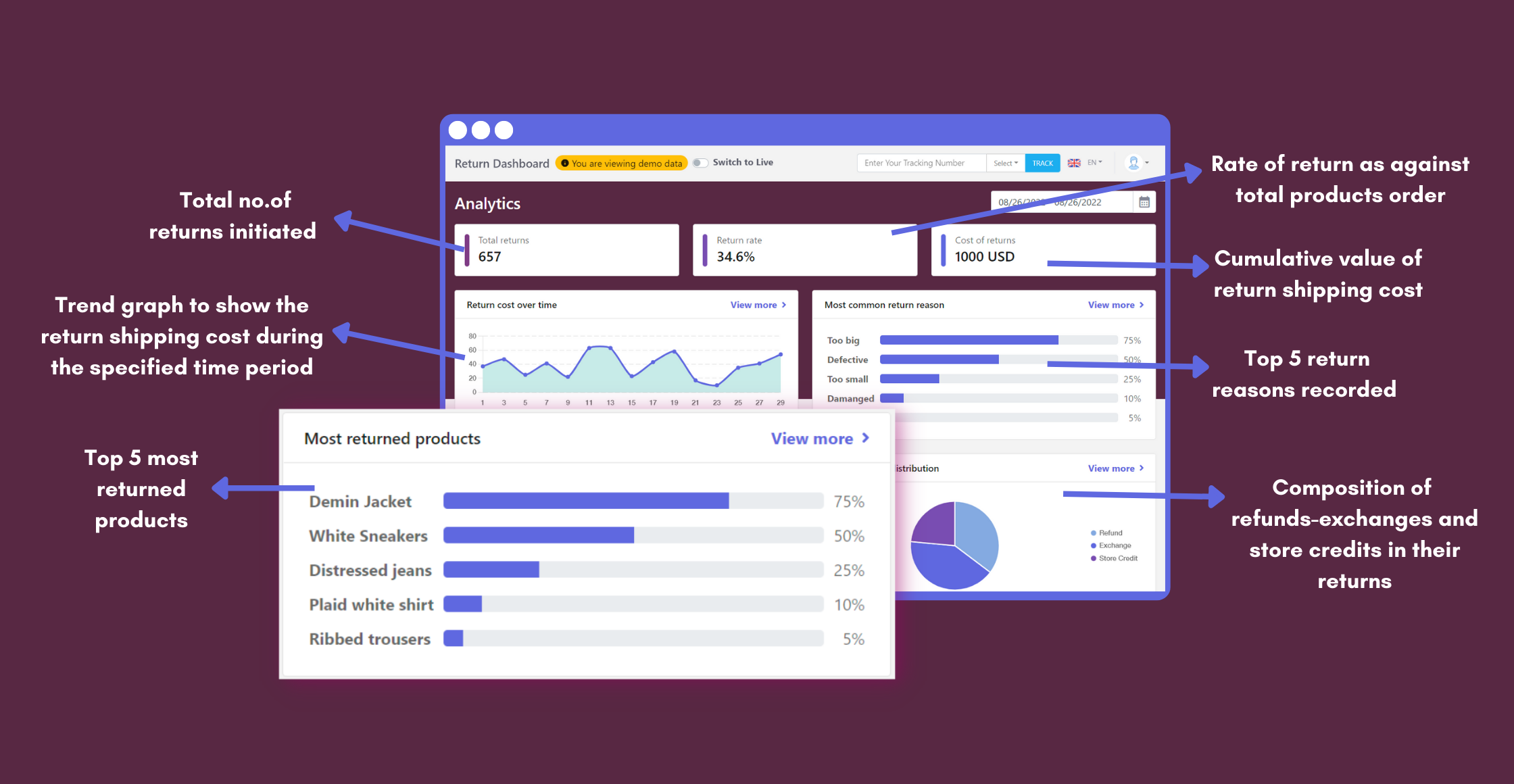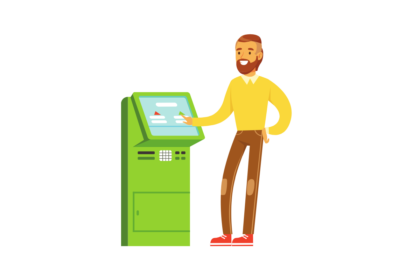E-commerce returns have greatly evolved over the years.
Businesses initially saw returns as just a cost-center for their business and planned to save a few bucks by not offering returns to their customers.
Then e-commerce retailers began realizing that customers preferred to shop with businesses that offered returns and considered returns inevitable and a necessary evil that encouraged people to shop more.
Fast forward to today, we are seeing returns as a great opportunity to build strong relationships and increase repeat purchases.
A great returns experience helps you increase repeat purchase rates by 4x.
But how do you determine if your strategies are indeed successful and you are indeed providing a great returns experience?
That’s where specific valuable return metrics or return KPIs (Key Performance Indicators) come in to help you measure the success of your e-commerce business’s returns experience.
These metrics help you keep track of these metrics and have a data-driven approach
So, what are these metrics, and why are they important? Let’s take a look.
Side note: After much product development hours, we at LateShipment.com are launching our advanced Returns Analytics Dashboard. This will enable your teams to make better business decisions when it comes to product returns. You can read more about the product launch below.
Returns-related Metrics (Return KPIs) to Keep Track of
There are generally two kinds of metrics when it comes to e-commerce returns that tell you if your strategies have been successful. Metrics that show whether your returns are acting as a competitive advantage for your brand and if returns are indeed profitable for your business. Here’s a compiled breakdown of both for you.
1. Return Rate
The return rate is the rate of return as against the total products ordered. That is, if 25 out of 100 orders from your customers are returned, your return rate would stand at 25%.
Return rate as a metric blurs the lines between your products and returns efforts. For example, returns can happen due to issues with your product or if your returns policy is too lenient, so as to encourage frequent fraudulent returns in the form of wardrobing, etc.
Despite being a legacy method, you can constantly keep track of your return rates to introspect different components of returns and make important returns-related decisions such as product descriptions.
2. Return Spend
Return spend, also the ‘Cost per return’, tells you the cumulative value of the return shipping cost that businesses spend per return.
If you’re a business that bears the cost of return shipping, then your return spends tell you how much you spend on return-related logistics over time.
This can give you insights to cut costs and get smart with your returns. For example, if you feel your return shipping costs are burning a hole through your pockets, encourage customers to opt for alternative and efficient return methods such as exchanges or store credit options to ensure revenue retention.
3. Reason for return
This new metric is an extension of the return rate that is set to clear the lines between product-related returns and fraudulent ones.
Knowing the reason behind customers returning their items gives you better clarity on breaking down your return rate.
Customers who have mentioned reasons such as defective, damaged, or simply didn’t like the product would not likely return to shop with you again. Therefore, use this metric to make frequent quality checks with your product to reduce customer churn.
4. Frequently returned products
This is another new metric that comprehends the reason for return and ultimately the return rate.
Here’s a question on your mind: “I know why customers are returning their orders but what are they returning the most?”
Knowing the answer to this question helps you understand the collective issue behind a particular item category. If the percentage is higher than your worry threshold, you can take efforts to recall the particular item and do quality checks.
For example, if your Denim Jacket and Jean Pants are being returned higher than usual, maybe it’s time for you to reconsider where you source your denim raw materials from.
5. Preferred return methods
This metric defines the composition of refunds-exchanges and store credits in product returns over a course of time.
Identify the percentage of returns that end up being refunded, turned into an existing product, or simply have its value-added for a later purchase.
Keep in mind that refunds usually mean lost revenue and as an e-commerce business owner, you must promote exchanges and store credits to ensure healthy returns and revenue retention.
You can incentivize your customers to opt out of frequent refunds by providing them with better deals for the others.
How to Regularly Keep Track of Return KPIs
Now that you’re aware of why your business needs to be aware of these metrics, it is clear that you need to keep track of these metrics regularly.
To make things easier, you can make use of a solution that provides these metrics on a consistent and most importantly. a unified basis.
Meet LateShipment.com’s Returns Experience Management platform with the all-new Returns Analytics Dashboard, a.k.a the solution
LateShipment.com is a one-stop solution for everything post-purchase, whose Returns Experience Management platform is built to boost returns-related metrics that matter most to your business.
As an addition to the Returns Experience Management, comes the upgraded Returns Analytics Dashboard which breaks down returns into simple, actionable metrics to help your teams make better business decisions.

With the help of the Analytics Dashboard, keep track and see these returns-related metrics work in your favor and ultimately spell the success of your e-commerce business’ returns strategies.
To Learn more about the dashboard and Returns Experience Management – Click here to schedule a call with a product expert
Other ways the Returns Experience Management platform can help your business
Apart from specific returns-related metrics, Returns Experience Management also helps you make returns easy and profitable by increasing important CX metrics:
- Conversion rate by extending a frictionless returns experience
- Repeat purchases with easy returns and status tracking
- Revenue retained with flexible return methods (seamless exchanges and store credit options).
Also, you can considerably reduce the time spent per return by making returns status tracking self-service.
Bottom Line
Remember, the returns experience you provide holds incredible power to boost your bottom line and create loyal customers for life. Therefore, it is time to redefine returns as a growth driver for your business.
To get all things done right before the significant returns season arrives in January, you can make use of a returns management solution such as LateShipment.com.









